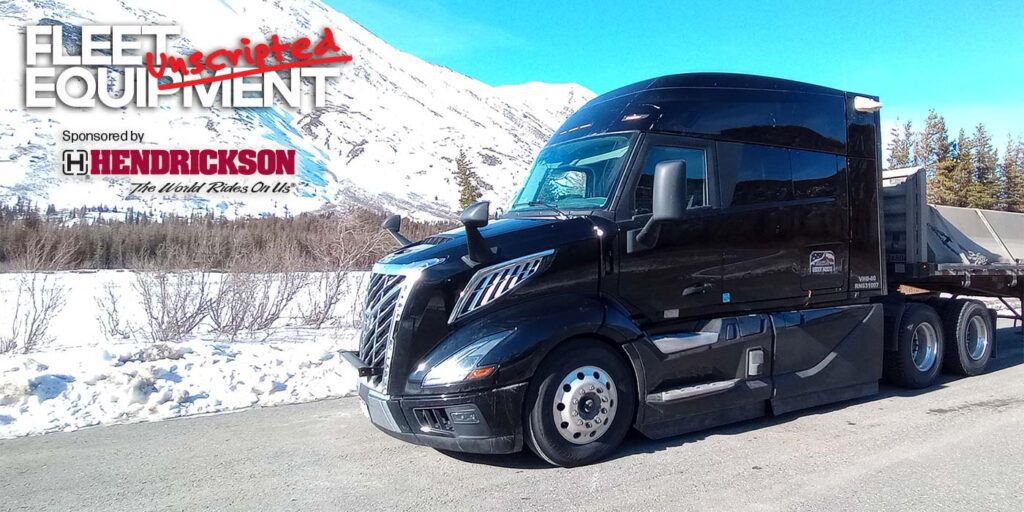“It’s Not a Question of If, but When You’ll Get Blown Over.”
In discussions with Volvo’s reliability engineering test drivers, it became evident that transporting goods in Alaska requires not only skill but also bravery. The drivers testing Volvo’s latest long-haul trucks are seasoned veterans, having transported loads well into the Arctic Circle, where some of the world’s most intense near-surface winds occur. One driver recalled narrowly escaping a truck rollover in the past, sustaining nothing more than a broken arm, while others weren’t as fortunate.
This highlights how challenging the trucking profession can be, as well as underscores the advancements in truck safety and efficiency even under extreme conditions.
Fairbanks, Alaska, serves as the critical testing ground for Volvo Trucks North America during the coldest months, with temperatures plunging from -50°F to 20°F, all amid a variety of road conditions. From snow and ice to slush and dry pavement, Alaska provides an authentic backdrop for the toughest tests.
“These are comprehensive vehicle validation runs,” stated Matt Taylor, group manager for reliability test engineering at Volvo Group North America. “We assess everything from cold-start capabilities and driveline performance to HVAC systems, door seals, and insulation—elements crucial for customers in real-world cold weather.”
Connecting Driver Experience with Engineering Accuracy
Alongside rigorous quantitative data collection, the testing process heavily relies on driver insights. The drivers aren’t merely behind the wheel; they play a vital role in the data gathering. Although digital diagnostics and telematics are critical, Volvo prioritizes real-time driver feedback. For example, Mike Chilson, a driver with over 45 years of experience, significantly contributes to the process.
“This isn’t just professional driving,” Chilson remarked. “Here, you’re alert to anything that seems off.”
Analyzing Road Performance
Dan Stathis, a test engineer at Volvo Trucks North America, combines the roles of driver and analyst. He explained that his job entails interpreting both the driving sensations and technical data behind any irregularities observed during tests.
“When an issue arises—a warning light or fault code—we don’t just log it,” Stathis noted. “We assess the driving conditions, whether it was during a climb, descent, or while cruising. That context is crucial.”
Refining Software and Systems
Modern trucks are as much about their software capabilities as they are about mechanical components, making software testing a key aspect of Volvo’s field assessments. “Numerous software levels run in these trucks,” Taylor explained. “We are tasked with validating the entire system. What passes in the lab must also succeed on the road.”
Through extensive real-world testing, engineers identify software regressions or overlooked calibrations, ensuring issues are addressed before mass production begins.
Tackling Alaska’s Tough Terrain
The mountainous roads of Alaska, with their steep inclines and declines, test the VNL’s handling under varied conditions. Whether climbing or descending, the trucks endure a range of load levels to simulate actual operational demands. The VGT engine, supported by Volvo’s intelligent powertrain controls, is designed to maintain safety and efficiency without requiring driver interventions.
Assurance for the Future
“While these environments may seem extreme, they reflect our customers’ work settings,” Taylor emphasized. “We assess these trucks throughout the Western regions, in both hot and cold climates, across steep gradients, and at high altitudes. Our testing is purposeful—we aim to validate the entire customer experience.”
The insights gained from testing in Fairbanks and Denali ensure that the all-new VNL is a product of thorough field testing rather than just design and laboratory examination. For fleet managers seeking reliability and performance from their equipment, this level of testing offers the assurance that matters most.


